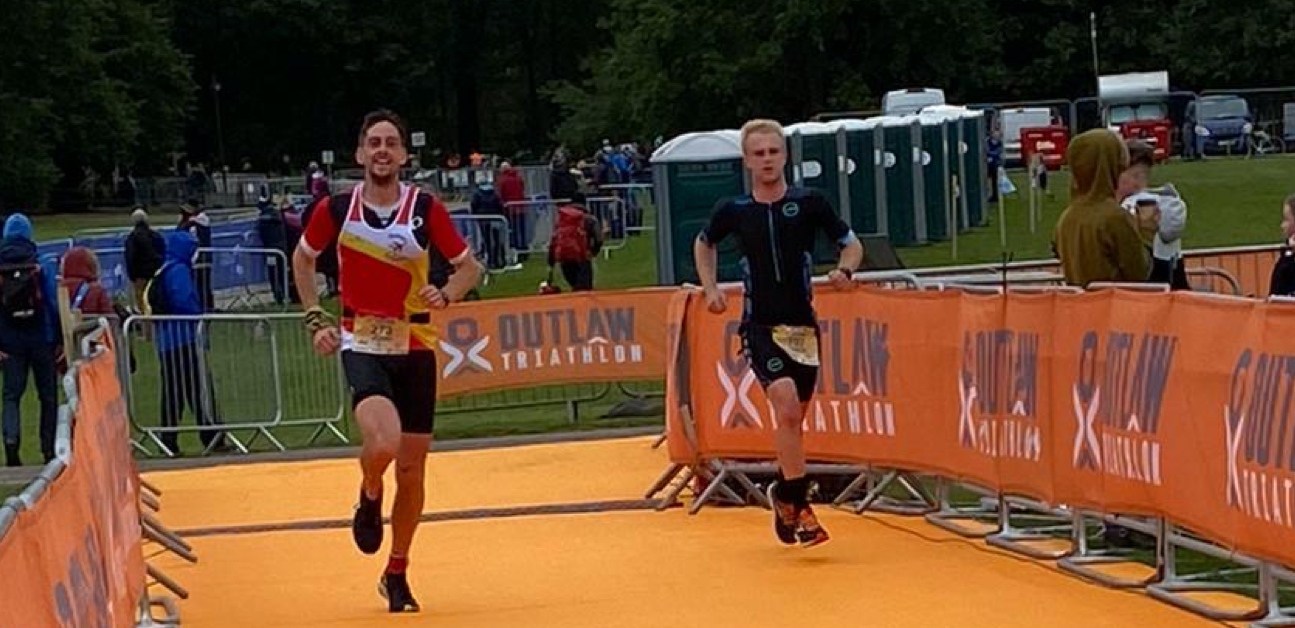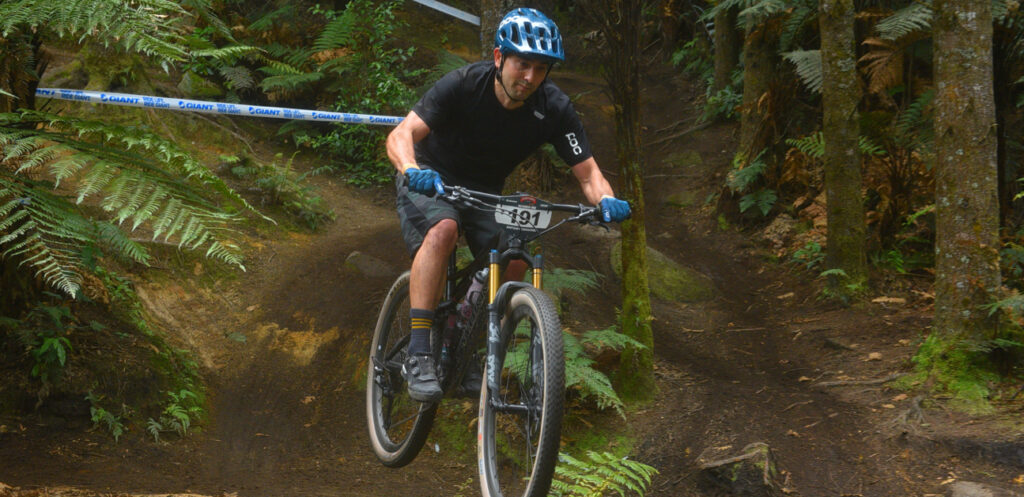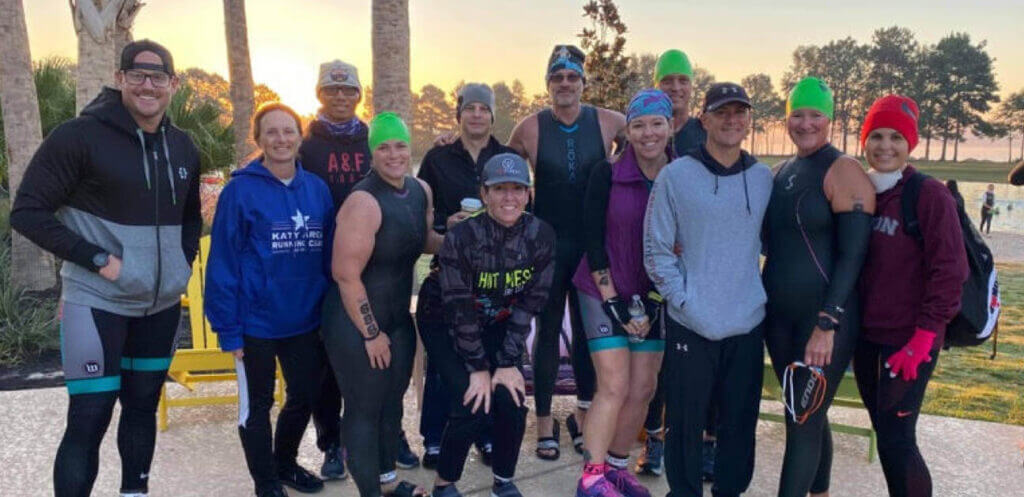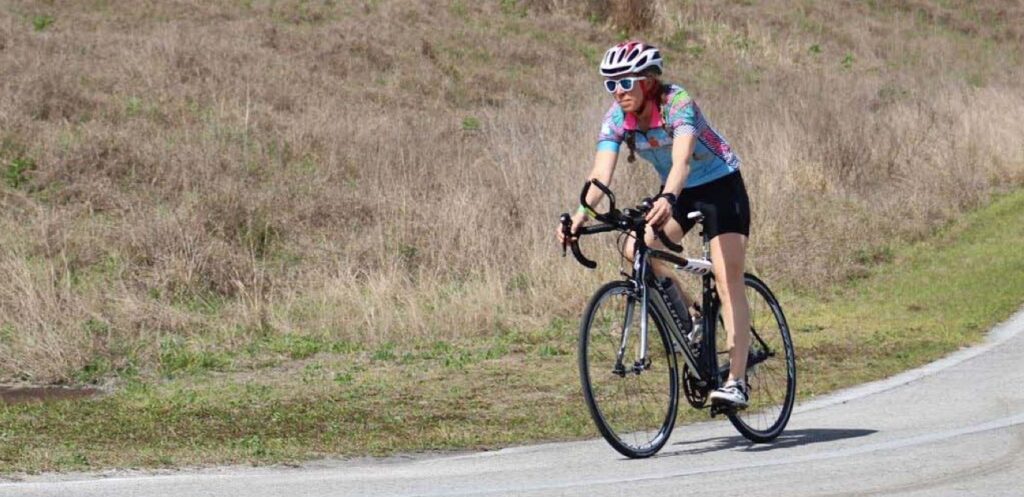Avoiding Injury and Increasing FTP 70w With John Tarrant

Every athlete faces obstacles on the way to success. For first-time triathlete John Tarrant, a history of injury and a demanding family life combined with the restrictions of lockdown to make his season a challenge. But with thoughtful planning, a positive attitude towards goal-setting, and the flexibility of TrainerRoad, John came out on top.
Share your success story and tell us how TrainerRoad helped you reach your goals.
A Busy Beginning
John Tarrant’s situation is a familiar one to anyone who balances training with a busy life. The 32 year-old UK-based father of two young children works a demanding day job for a pharmaceutical company, and has plenty of projects around the house that take up his weekends. John’s many commitments don’t leave him much time for sport, and a nagging series of running-related injuries haven’t helped either. As a result, John stopped running around the time his first child was born and went without an athletic outlet for several years as fatherhood became his priority.
Last fall, John and his family finally completed a long series of home renovations, and he found himself with spare time in the evenings after the kids went to bed. Fresh off a few spin classes at the gym, he bought an indoor trainer to do some cycling.
In addition to his experience running, John grew up swimming and briefly worked as a lifeguard. Combined with his new cycling hobby, the logical outlet for these interests was in triathlon, and he entered two half-distance events in May and September of the upcoming year. With the goal, the equipment, and the motivation in place, all John needed was the strategy to get there. He signed up for TrainerRoad and started working towards his events.
Setting and Reaching Goals
Training challenges and schedule restrictions can be particularly daunting for triathletes, with three sports to focus on at once. John handled this by approaching things strategically, setting realistic and attainable goals and finding pragmatic solutions to achieve them.
Adaptive Training
Get the right workout, every time with training that adapts to you.
Check Out TrainerRoadAvoid Injuries
John’s first big goal for the year was straightforward, but daunting: Don’t get injured. During his running years, repeated IT band problems frequently disrupted his training. Misdiagnoses and overtraining twice culminated in painful stress fractures, as John would partially recover from one injury and resume training too quickly, only to get injured again.
These experiences served as an example of what not-to-do, so John resolved to build up his running volume very slowly and carefully this time around. He also read Becoming a Supple Leopard and began a regimen of mobility work including stretching and foam rolling.
Family Time and Flexibility
A second major challenge was to fit training into the life of a busy working dad, without shortchanging family time. Inexperience meant cycling was John’s weakness, so he decided to base his training around his bike workouts. John’s wife Yasmin works a few evening shifts each week, so he scheduled all his bike workouts for those nights, riding the trainer after the kids went to sleep. He swam and ran twice a week in the morning before work, creating a challenging schedule but reducing the need to be away during times his family needed him.
John followed TrainerRoad’s mid-volume half-distance triathlon plans, which only require about 5 hours on-bike each week. Because of his history of running injuries he modified his plan to reduce his running volume and avoid any chance of reinjury. Further modification was required when John’s first scheduled race was canceled at the last minute due to the UK’s COVID-19 lockdown. It was a disappointment, but Plan Builder made it easy for John to rebuild his training plan to target an alternate race 4 months later.
Replacing Outcome Goals With Process Goals
John achieved lots of measurable success on the way to his new target event. On the bike his FTP reached 279, a 70 watt-improvement from his starting point. He was running injury-free and setting numerous personal bests despite a very low training volume. And his swim improved too, even as the local gym closed for lockdown and training moved to open water. As race day approached there was reason to be optimistic.
The initial goals John set for his event were outcome goals: to finish in the top 100 overall and place in the upper ranks of his age group. Shortly before the race, he realized these goals relied heavily on external factors outside of his control, such as the weather and performance of other athletes.
John changed his objectives to process goals that only relied on himself. This way, no matter the end result of the race he’d have an objective way to measure his own success. John’s goals were: 1. To enjoy his first triathlon, 2. To target an average of 222w (80% FTP) on the bike, 3. To stick to his nutrition plan, and 4. To maintain an even running pace of 4:15/km (6:50/mi).
Goal Setting Takeaways
- Health enables performance. Avoiding injury should be a crucial first goal to allow for other successes.
- It’s often hard to fit training around family and work obligations. Low-volume and mid-volume training plans can yield big results with little time commitment .
- Set firm goals, but remember that life is full of surprises. Plan Builder makes it easy to restructure your season when the unexpected happens.
- Process Goals are more productive than outcome goals, as they allow you to clearly judge success regardless of your race result.
- Identifying success in unexpected places can help you stay motivated.
Race Day Success
Race day finally arrived, on a cold and blustery September day. The swim was frigid and was shortened due to cold, and the bike ride was battered by crosswinds. But John executed his plan flawlessly. He held his own during the swim, and was within 1w of his target power on the bike. His run was very close to target pace, and within a few minutes of his half marathon PB despite the weather and preceding bike ride. And, he aced his nutrition plan across every discipline.
John did end up within the top 200 overall, but a bit further down in his age group than he’d initially hoped. If he were judging by outcome, the race might seem like a mixed bag, but judging by his process goals it was a huge success. He learned plenty of lessons for next time, avoided injury, and most importantly he had fun.
Ready for More
2020 has been a strange year for every racer, and John’s ability to adjust, adapt, and maintain focus with TrainerRoad can serve as an example for all of us. His smart planning and goal-setting won out in the end, as his FTP is now up by a total of 83 watts and his running continues to improve with injury-free low volume training. John’s already registered for some races next spring, and one thing seems likely: whatever surprises 2021 has in store, John Tarrant will take them in stride, plan around them, and continue to get faster.
Tell us your story. Success isn’t always a race win. It can be life-changing health improvements, reaching a personal goal, or more.


